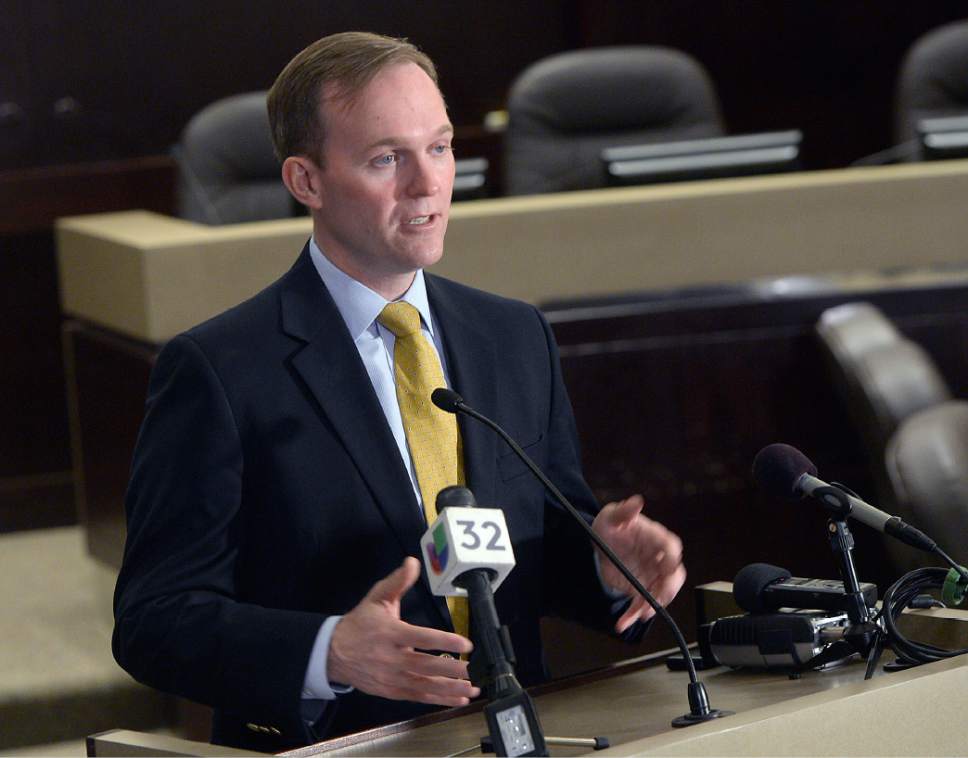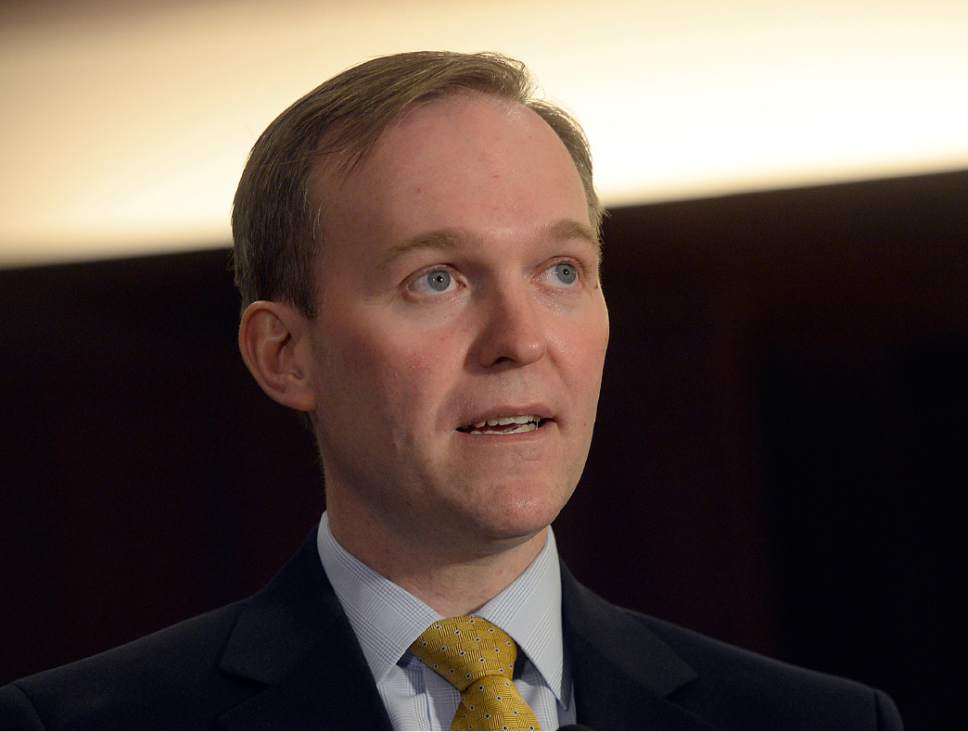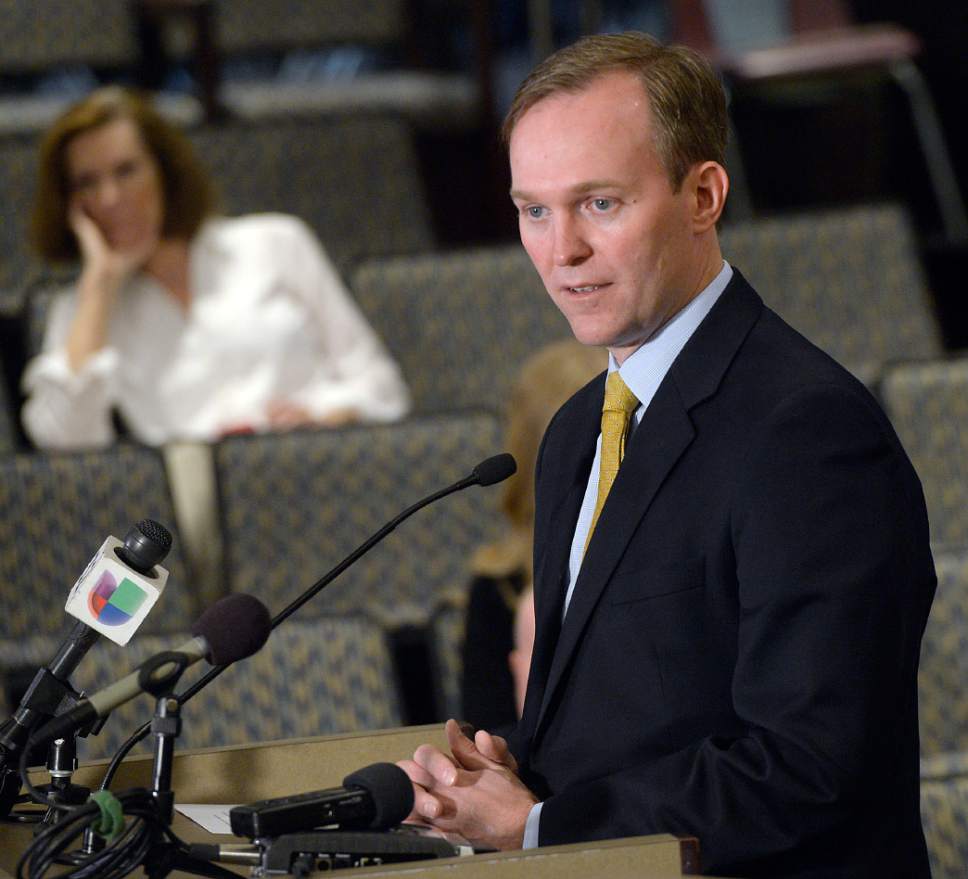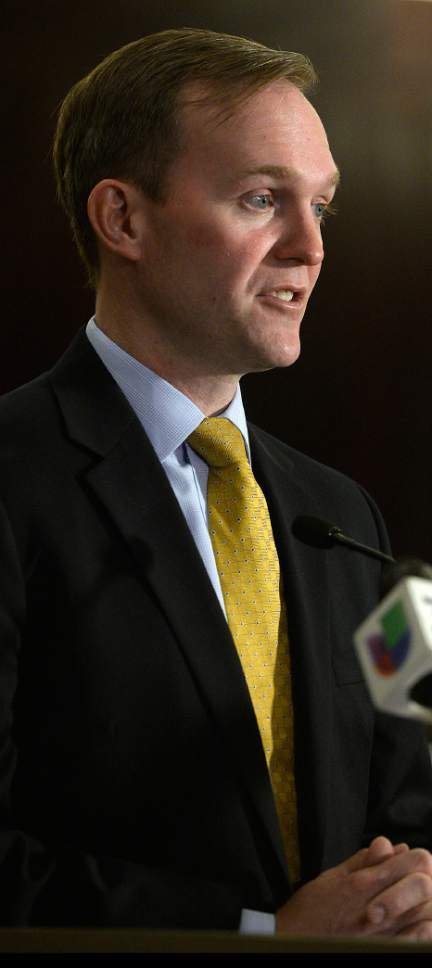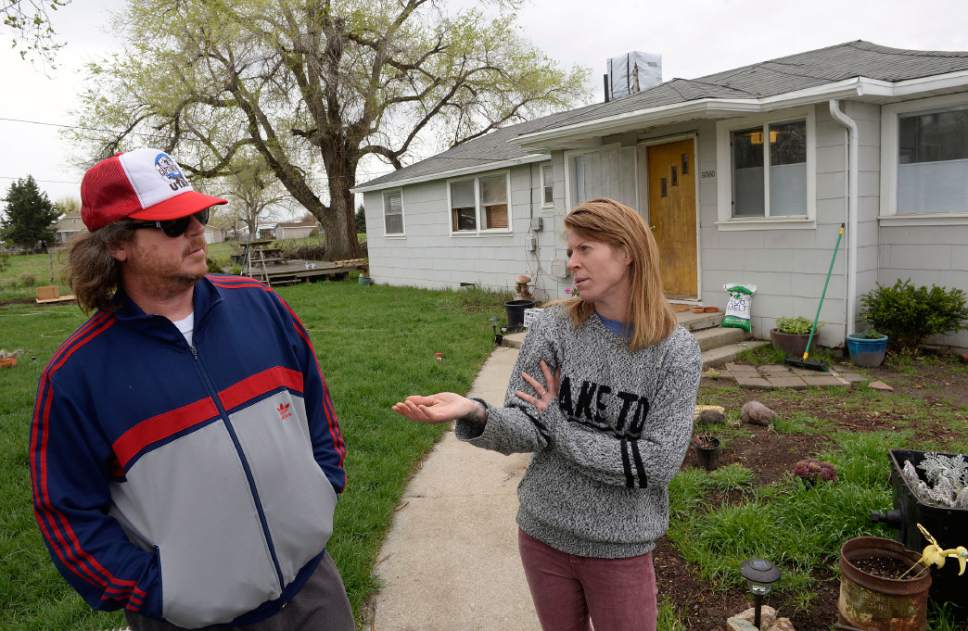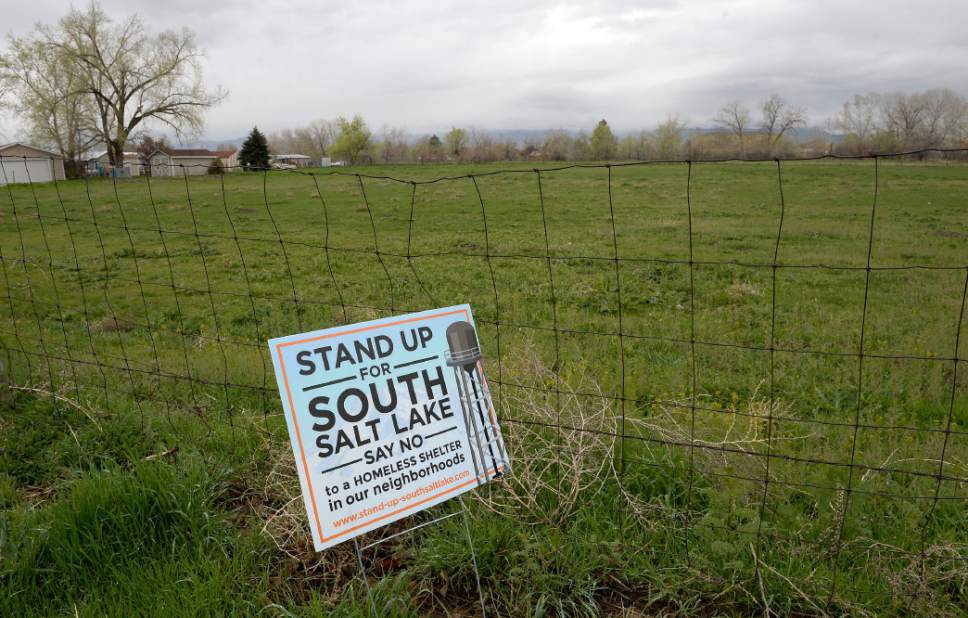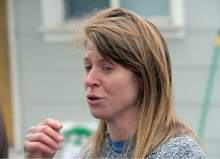This is an archived article that was published on sltrib.com in 2017, and information in the article may be outdated. It is provided only for personal research purposes and may not be reprinted.
South Salt Lake will host the third homeless resource center in an ambitious initiative to get away from packing people into an emergency shelter and begin providing more intensive substance abuse, mental health and other services in smaller, scattered facilities focused on helping people permanently escape homelessness.
Salt Lake County Mayor Ben McAdams on Friday picked a vacant lot at 3380 S. 1000 West, near the county jail in one of the last undeveloped areas of South Salt Lake, as site of a planned shelter up to 300 beds.
The choice, which McAdams and a state agency director described as final, brings to an end three weeks of debate over a site-selection that pitted three communities against each other. It might displace some residents, who said they'd likely move from nearby homes.
"This was not an easy decision," McAdams said. "The concerns of the community have weighed heavily on my mind as we've tried to weigh this recommendation and where we might go."
"I do think we have a site that will work and will be a good site," he said.
Jonathan Hardy, director of the Housing and Community Development division of the state Department of Workforce Services, said a state committee wouldn't challenge the recommendation — making this likely the final decision.
The center will be built on a dead-end road near a juvenile detention facility, the Salt Lake County Sheriff's Office and the Salt Lake County Emergency Management building.
The site's access to services, proximity to downtown Salt Lake City and low cost made it an attractive spot, the mayor said.
He added a stipulation: before a shovel hits the ground, state legislators next year must pass a law that would collect tax money and give it to cities that host homeless centers.
"That legislation would gather tax revenues from across Salt Lake County and across the state of Utah and pool them in a fund that can offset and mitigate any impacts that any community hosting a homeless resource center might experience," McAdams said.
He also recommended building a new county library in South Salt Lake and finding money for open space and transportation infrastructure.
An emotional South Salt Lake Mayor Cherie Wood said residents were angry with the decision and vowed to fight to ensure the county's promises are met.
"Today the community of South Salt Lake was dealt a lethal blow," she said at a Friday news conference. "Our residents and businesses have stood together, shoulder to shoulder, to fight this battle. We will continue to fight."
It's unclear what form such opposition might take. The Legislature earlier this year passed a law that gives the county authority to locate such a shelter regardless of municipal zoning regulations or ordinances that might otherwise block it.
The site at 1000 West is a rare undeveloped spot just south of 3300 South. That's why Ryann Ringel moved there from Sugar House less than a year ago.
She stood in the drizzling rain hours after McAdams' announcement, her goats mowing the grass in the backyard of her one-acre property, and said the decision caught her by surprise.
"If they're going to put it here, they have to tear down that bar and build a grocery store," she said, pointing to the Good Spirits tavern on the corner that's a tenth of a mile from the site.
McAdams knocked on her door Friday morning and told her repeatedly he was sorry she was affected by his decision and said she and her neighbors would be "compensated."
He indicated the county and state would discuss expanding the footprint of the site by buying nearby houses, mentioning homeless residents would benefit from open areas and storage.
"I can't say we would buy every property," he said, "but I think that's a conversation and negotiation that we would welcome with some of those adjacent property owners."
That may not be good enough for Joyce Hewitt, Ringel's 79-year-old neighbor who built her house two doors down from the incoming center in February 1963.
"I won't stay here," she said, "I wouldn't feel safe... But I've gotta have enough money. I have a husband that's sick."
About 250 residents showed up for an emergency community meeting Friday night, when Wood and other community leaders explained what they knew about the proposed site and addressed questions from community members, including topics like policing and financing.
The crowd erupted into applause several times in support of Wood's efforts to fight the county on the issue and to try to mitigate negative effects on the community. She also promised not to raise taxes.
While some speakers said they weren't "insensitive" to the challenges facing homeless people, they expressed outrage that the county has consistently "dumped on" their city. Multiple residents noted that their lower-income, blue-collar community is treated differently than wealthier municipalities, and many called on fellow voters not to re-elect McAdams.
The developer looking to build 77 single family homes in the same area near 700 West said the project would still move forward, according to John Thackeray, a partner with The Thackeray Garn Co.
"We think it's kind of a good use for that area," Thackeray said.
That support factored into McAdams' decision to pick the 1000 West site a block away.
The mayor's recommendation now heads to the state Homeless Coordinating Committee, led by Lt. Gov. Spencer Cox. Hardy, a member of the committee, said it would be ratified.
"The decision on sites has always been a local decision that we're supporting in that regard," Hardy said. "Our job is to support the local decision on this."
The site selection is part of an effort by the state, county and Salt Lake City to close the 1,100-bed shelter in the Rio Grande district of Salt Lake City by July 1, 2019, and disperse its population in three smaller shelters across the county: two 200-bed centers and one of up to 300 beds.
McAdams said no decision has been made about where each population of homeless residents — single women, single men and families — will go. The South Salt Lake shelter, miles south of existing resources downtown, would be a low-needs population, he said.
"I think the largest number of low-needs individuals at this point in the system are probably working men," he said during three hours of public debate Thursday.
County leaders hope they can give homeless people a better chance of success by building smaller shelters, spreading them out and offering critical services like food and medical care in-house.
Salt Lake County already has about $200,000 invested in the South Salt Lake site, currently owned by the Utah Nonprofit Housing Corporation, and has agreed to pay no more than $800,000, McAdams said.
Two other sites will be in Salt Lake City – at 131 E. 700 South and at 275 High Ave. The city had originally considered opening four centers in town, an idea that was later scaled back in favor of the three-site approach that's moving forward.
The Legislature gave McAdams a month to decide where the third site would go and required that it be outside Salt Lake City. McAdams said he identified dozens of potential sites, but publicly identified only nine: four in South Salt Lake, three in West Valley City and two in Draper.
Most residents from those cities who showed up to public forums on the sites opposed them as bad choices for a new homeless center.
In South Salt Lake, Mayor Cherie Wood said her small city's tax base was inadequate to handle what she and Police Chief Jack Carruth expect will be a rise in need for services with a center in town.
In his letter to Cox, McAdams gave a nod to the burden South Salt Lake bears for the county and said he would advocate for a new public library and "other significant investments in open space and transportation infrastructure."
He also said the design should be such that there is no direct access to the Jordan River Parkway, and said improvements should be made to that section of the river trail.
Twitter: @TaylorWAnderson
— Reporter Mariah Noble contributed to this story.


